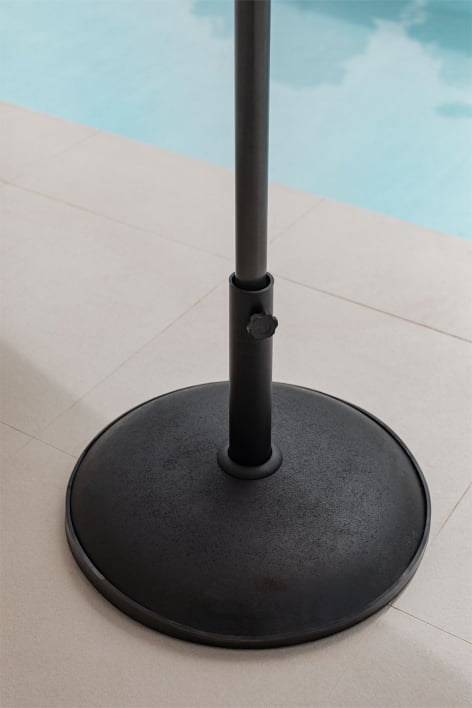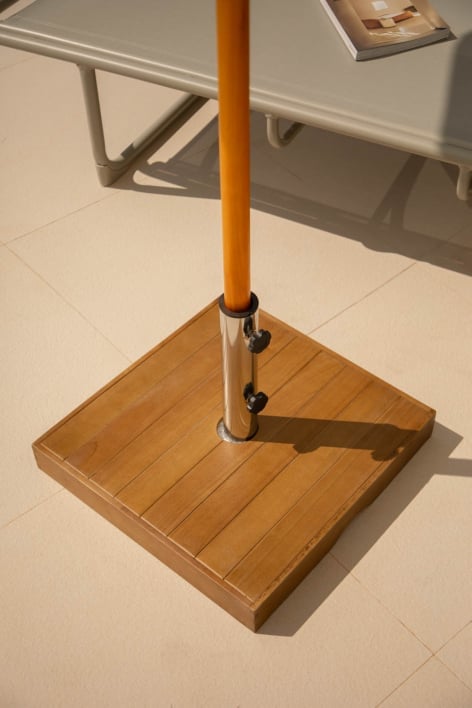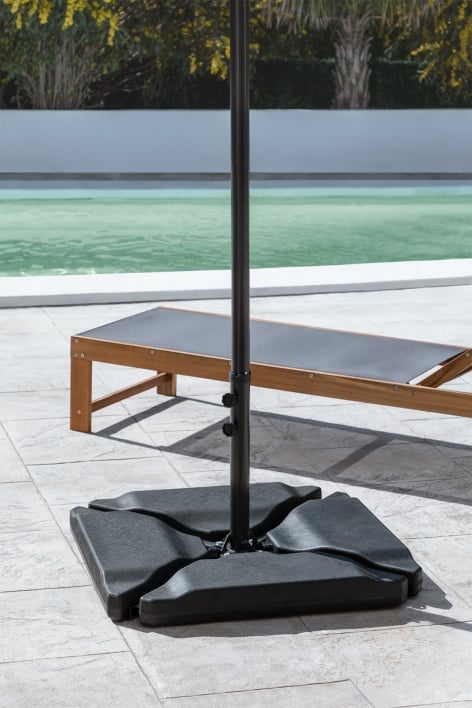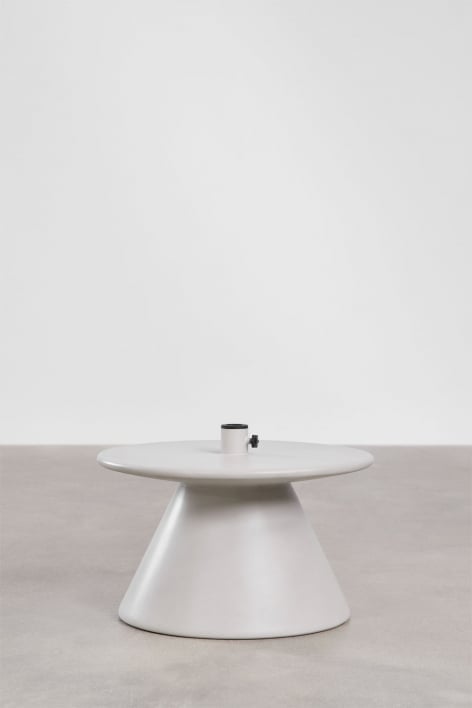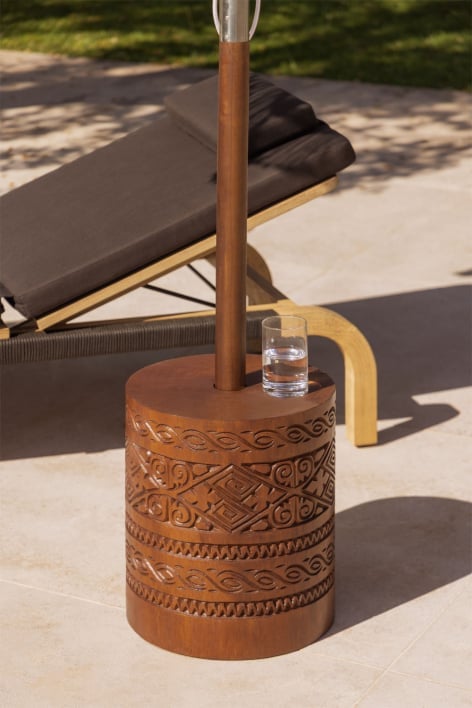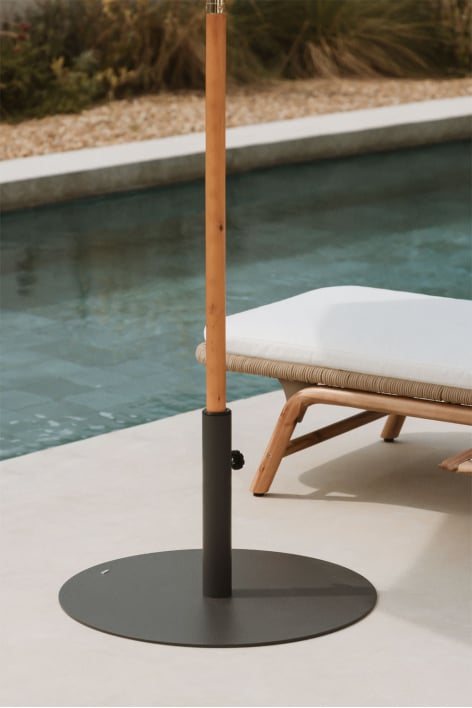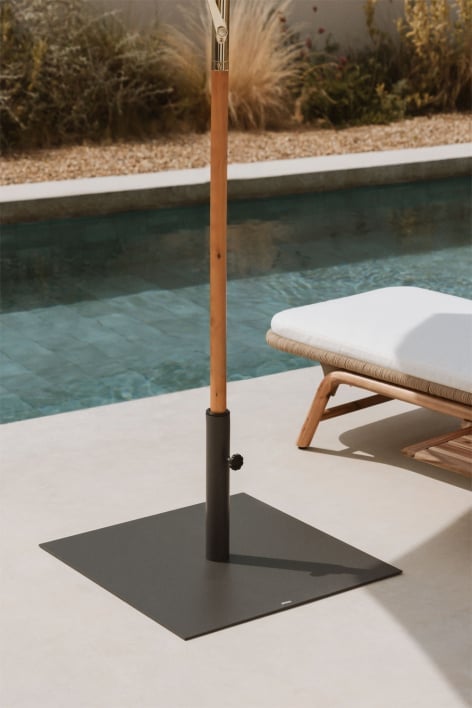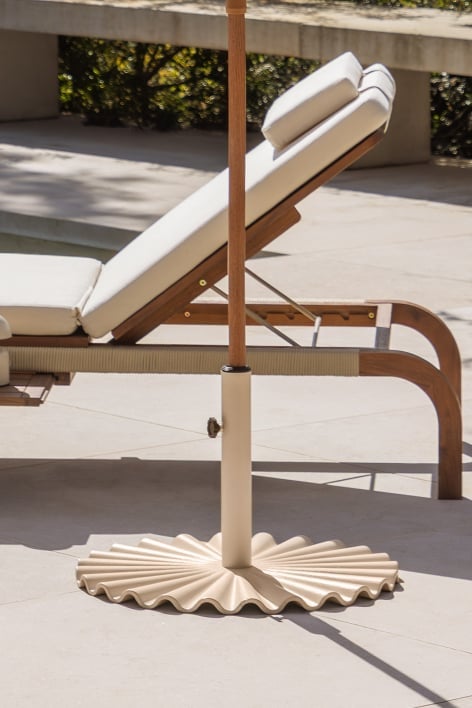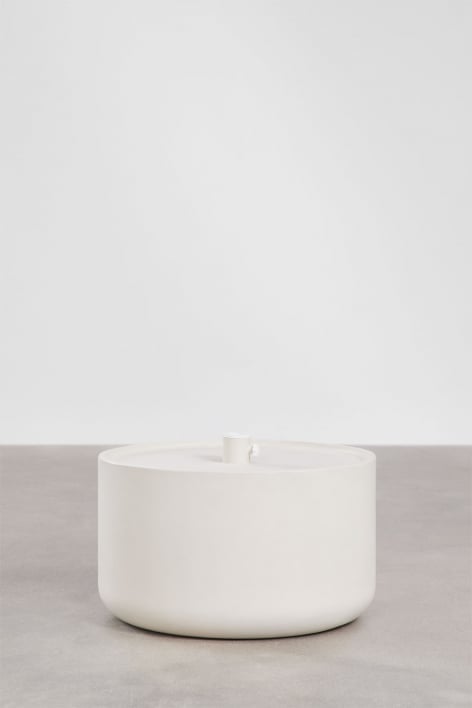Filter(0 Filters applied)
Parasol Bases
Parasol and umbrella bases are essential for ensuring stability and safety on your terrace or garden. In addition to being practical, they are a key element for enjoying your outdoor spaces without worries.
Available in a variety of materials, designs, and weights, our brackets adapt to all types of parasols and decorative styles, ensuring strength and functionality in every corner of your home.
Parasol Bases: The Essential Foundation for Safe Shade
A parasol base is the essential anchor point that guarantees the safety and stability of any outdoor shaded area. More than just an accessory, it's an engineered component designed to withstand wind and support the weight of the parasol, preventing dangerous tipping. Choosing the right base, made from durable materials like concrete, steel, or high-density polymers, is crucial for enjoying gardens, patios, and balconies with complete peace of mind.
Types of parasol bases
| Guy | Characteristics | Ideal for... |
|---|---|---|
| Concrete Feet | Maximum weight capacity and inherent stability. High resistance to weathering and UV rays. No assembly required. | Large parasols in gardens or terraces exposed to the wind, where stability is the top priority. |
| Steel or Metal Feet | Robust and durable design with a more streamlined aesthetic. They tend to be quite heavy for secure mounting. | Modern or industrial style outdoor spaces that seek a balance between resistance and design. |
| Refillable Resin Feet | Lightweight for transport and storage. They are filled with water or sand to reach the necessary weight for anchoring. | Small terraces, balconies, or for those who need to easily store the base out of season. |
| Feet with Wheels | They incorporate wheels (often with brakes) to move the parasol effortlessly following the movement of the sun. | Versatile and spacious areas such as swimming pools or large terraces where the shaded area needs to be relocated. |
Advantages of a suitable parasol base
- Safety and Stability: This is the main benefit. A base with the correct weight prevents the parasol from tipping over in a gust of wind, preventing accidents.
- Weather Durability: Materials such as concrete or treated steel are designed to withstand rain, sun, and temperature changes without degrading.
- Adaptability: Most stands include adapters or adjustment screws to be compatible with different mast diameters, offering great versatility.
- Full Functionality: Allows you to place the shade exactly where you need it, regardless of whether there is a table with a central hole or not.
Tips for choosing the ideal parasol base
The fundamental rule is proportion: the larger the parasol's diameter and wingspan, the heavier the base should be to ensure stability. As a guideline, for parasols up to 2 meters in diameter, a base of at least 20-25 kg is recommended. For diameters of 3 meters or more, look for bases of 40 kg or more. Always measure the diameter of your parasol's pole to ensure compatibility. If you need to move the parasol frequently, a model with integrated wheels, although heavier, will offer unparalleled convenience.
Frequently asked questions about parasol bases
-
How do I choose the right weight for my parasol base?
The choice depends directly on the size of your umbrella. The larger the fabric surface, the greater the force the wind will exert on it. It's crucial to choose a weight that can effectively counteract that force.
-
Are parasol bases universal?
Not all, but most quality models include an adapter system or a tube with a pressure screw that allows them to be adjusted to the most common mast diameters on the market.
-
Can they always be left outside?
Yes, they are designed for that. However, to maximize their lifespan, especially for resin or metal models, it is recommended to cover or store them during the winter or long periods of inactivity.
-
Which material is most recommended?
There is no single "best" material, but rather one best suited to each need. Concrete offers maximum strength. Steel combines robustness and design. Refillable resin stands out for its practicality and ease of storage.
Design, quality and experience
Behind every parasol base lies a study of physics and materials science. Our selection prioritizes safety, choosing bases with the right weight and distribution to provide a low and stable center of gravity. We focus on the quality of the materials to ensure a long lifespan against the elements, and on functional designs that facilitate everyday use, whether through wheels, handles, or simple adjustment systems.
We invite you to explore our range of solutions and find the foundation that will provide the stability and peace of mind your shaded area needs.
